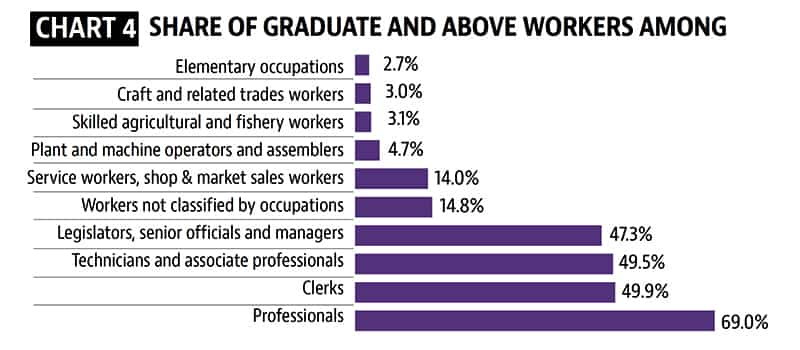Working on skill deficit key to boost farm economy
Unless the deficit is addressed, plans to improve incomes in the farm sector are unlikely to succeed
According to the 2011 census, 45% of India’s workforce is engaged in non-agricultural activities i.e. professions other than cultivation and agricultural labour. This number diminishes by slightly more than two percentage points if one excludes two other primary sector activities: mining and plantations, forestry and fishing. Who are these workers? Which industries and at what positions do they work in?
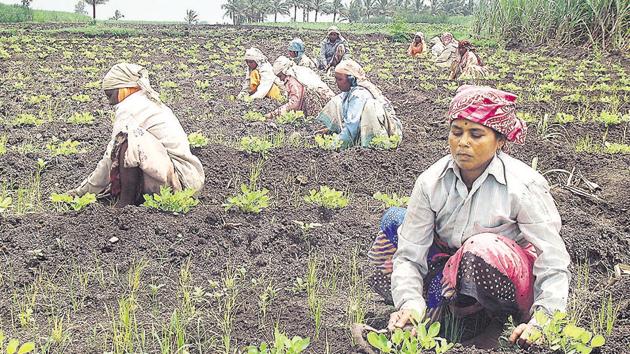
The census provides statistics on number of workers in 20 other industrial categories in addition to agriculture and allied activities and mining. HT has created seven broad categories out of this industrial classification to map the importance of various industries in India’s non-agricultural workforce: agriculture and allied activities and mining; construction; all household industry (HHI) workers; manufacturing; wholesale and retail trade; education, health, social work, public administration and defence; and all others. For the purpose of our analysis, HHI workers in the sectors of manufacturing, wholesale and retail trade, information and communications and other services, have been added together, in order to get an idea of the magnitude of petty producers in the economy. These statistics show that non-HHI manufacturing has the highest employment share among non-agricultural industry categories. In absolute terms, the number is just 7.3%. Construction is ranked second with a 5.6% share in total employment (Chart 1).
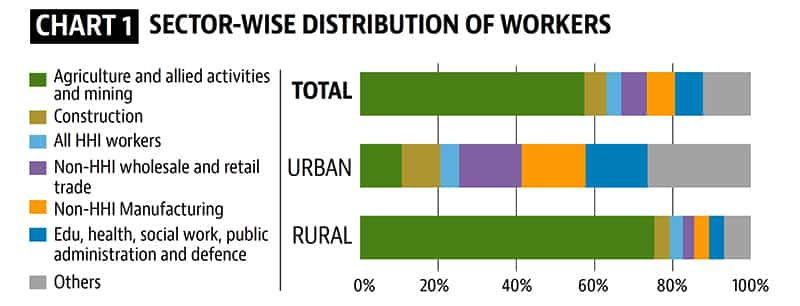
As pointed out in the first part of this series, there is a large discrepancy between the census and the National Sample Survey Office (NSSO) estimates of non-agricultural employment. While NSSO numbers show an absolute decline in the number of workers employed in agriculture, between 1999-00 and 2011-12, census data between 2001 and 2011 shows the opposite trend. Most of this discrepancy manifests itself in the share of construction workers. While the 2011-12 NSSO statistics put the share of construction workers in total workers at more than 10%, this is less than 6% in the 2011 census. This is probably a result of the census and NSSO identifying the same set of workers as agricultural workers and construction workers, respectively. According to a paper by Jayan Jose Thomas and M.P. Jayesh at Indian Institute of Technology (Delhi), which first pointed to this discrepancy, this could be a result of the difference in the ability of these two databases to capture the effects of short-term migration.
This controversy notwithstanding, the census does give a lot of other insights about India’s non-agricultural workforce. For example, more than 40% of India’s agricultural workforce in 2011 was illiterate. This figure was 30% and 33% for construction and HHI workers. Less than 5% of the workers employed in these sectors were graduates or above. More than 40% of non-HHI manufacturing workers had not even completed secondary education (Chart 2).
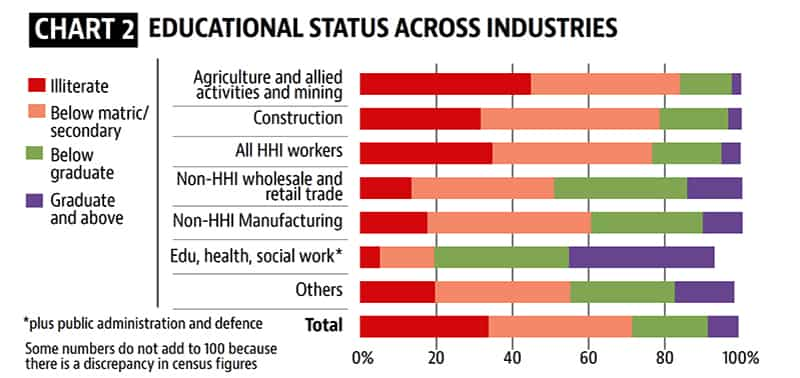
The statistics also show that men have a greater share than women in all six non-agricultural employment categories, except HHIs. This shows that while women are not allowed to go outside and work except in farms, they are bigger participants in economic activities which take place within the confines of the household. This underlines how restrictions on female mobility limit the participation of women in the non-agricultural workforce (Chart 3).
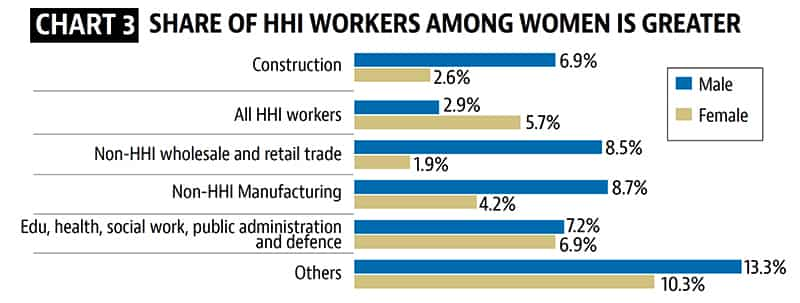
In addition to industry-wise classification, the census also gives occupation-wise details about India’s non-agricultural workers i.e. those other than cultivators and agricultural labourers. The 2011 census classifies non-agricultural workers into 10 broad categories, some of which are further classified into sub-divisions. Craft and trade related workers and elementary occupations account for more than one-third of all non-agricultural workers.
What stands out in these statistics is the fact that the skilled agricultural and fishery workforce has just 3% workers who are graduates or above. This -- when read with the statistic that more than 40% of India’s workforce in agriculture and allied activities is illiterate -- shows the acute skill deficit in India’s farm economy. Unless the deficit is addressed, any plans to significantly improve incomes in the farm economy are unlikely to succeed. (Chart 4).
